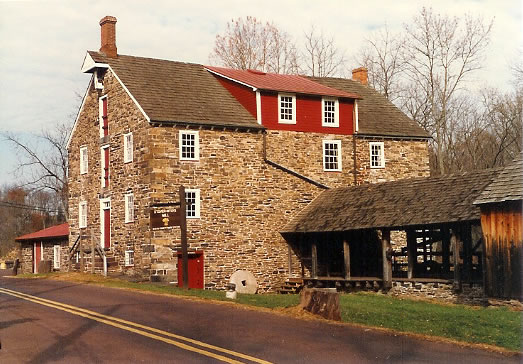
Stover / Myers Grist Mill
Bucks Co. | Pennsylvania | USA
Watersource: Tohickon Creek.
Stover / Myers Grist Mill
Off U.S.611 a mile south of Pa.113 junction, angle left onto Pa.413 and take the first left onto Dark Hollow Rd. Continue through Pipersville for a little over a mile, turning left at the bottom of the hill. Mill is a few hundred yards on the right.

Very well kept mill in a Bucks Co. Park situation. Mill was built in 1800 by Jacob Stover & rebuilt by him in 1834. It was sold in 1836 to his son Samuel. Christian M. Myers, Samuel's son-in-law, assumed management in 1863, rebuilt the mill again in 1885, and inherited it in 1888 by the fact the he had married Samuel Stover's daughter Eliza in 1863. Myers retired in 1904, but leased to local millers. Eliza's son S. Horace Myers gained complete ownership in 1927 and continued to lease until 1942, when it was sold to an outside entity.
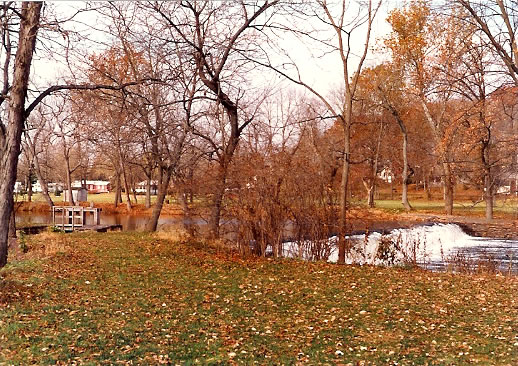
Picture of the dam on Tohickon Cr. and the inlet into the headrace controlled by a manually operated wheel & gate. Meyer's Dam was an popular camping and picnicking spot since the mid-1800`s, well before a county park was created. **Check this website for added history- www.livingplaces.com/PA/Bucks_County/Bedminster_Township/Stover-Myers_Mill.html

The 40'x 60' Bucks County fieldstone constructed mill was water-powered and later also utilized wood and coal powered steam as evidenced by the tall stack in photo #7. This view shows the tailrace from the mill behind the sawmill, that has been added by the restoration effort. Tax records of the time indicate a mill may have been on this site as early as 1750. Stover purchased the property in 1784 but didn't build his first mill until 1800. In the interim, he may have used the "1750 mill". The catshead at the front peak has inscribed "1800-1834 Stover's Mill".
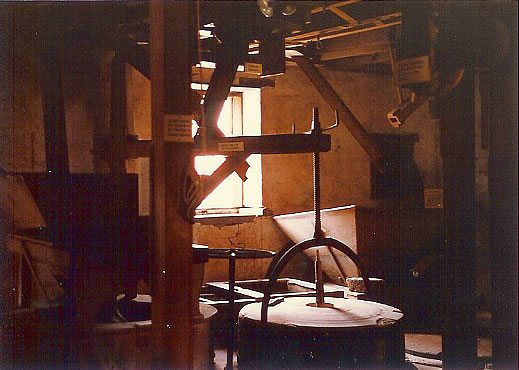
View of grinding stones on 1st floor area. Power was provided by the Tohickon Cr. utilizing an internal water wheel until about the 1850`s, when turbines were introduced, of which two original turbines remain.
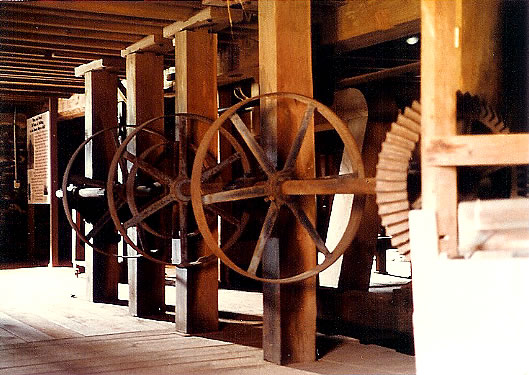
Christian Myer's additional improvements in 1885 included the addition to house the boiler and steam engine providing more power for a roller mill process. The roller process including steel rollers, purifiers and sifters (gyrators), enabled the reprocessing of the grain; thereby removing most ,if not all, of the impurities yielding a higher quantity of whiter flour.
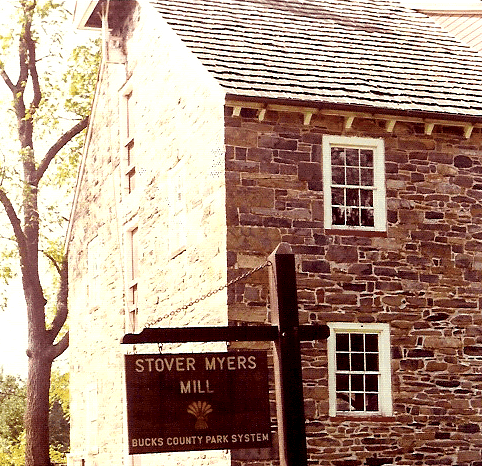
The increased cost of machinery, labor, and general overhead; along with the moving of flour production to the upper Midwest and the use of large industrial mills, all spelled an end to the small local mills. Out of the flour production by 1920, the mill continued to custom grind animal feeds and sell associated products through 1955.
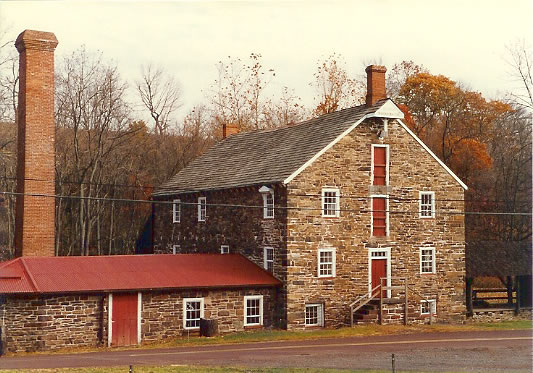
For a short period it was a church retreat, until secured by Bucks County in 1967. Restoration occurred in 1970, then again in 1976, directed by David Driscoll with consultations by the master miller of Philipsburg Manor, N.Y. at the time, Charles Howell. Stover/Myers Mill was placed on the National Historic Record in 1978.